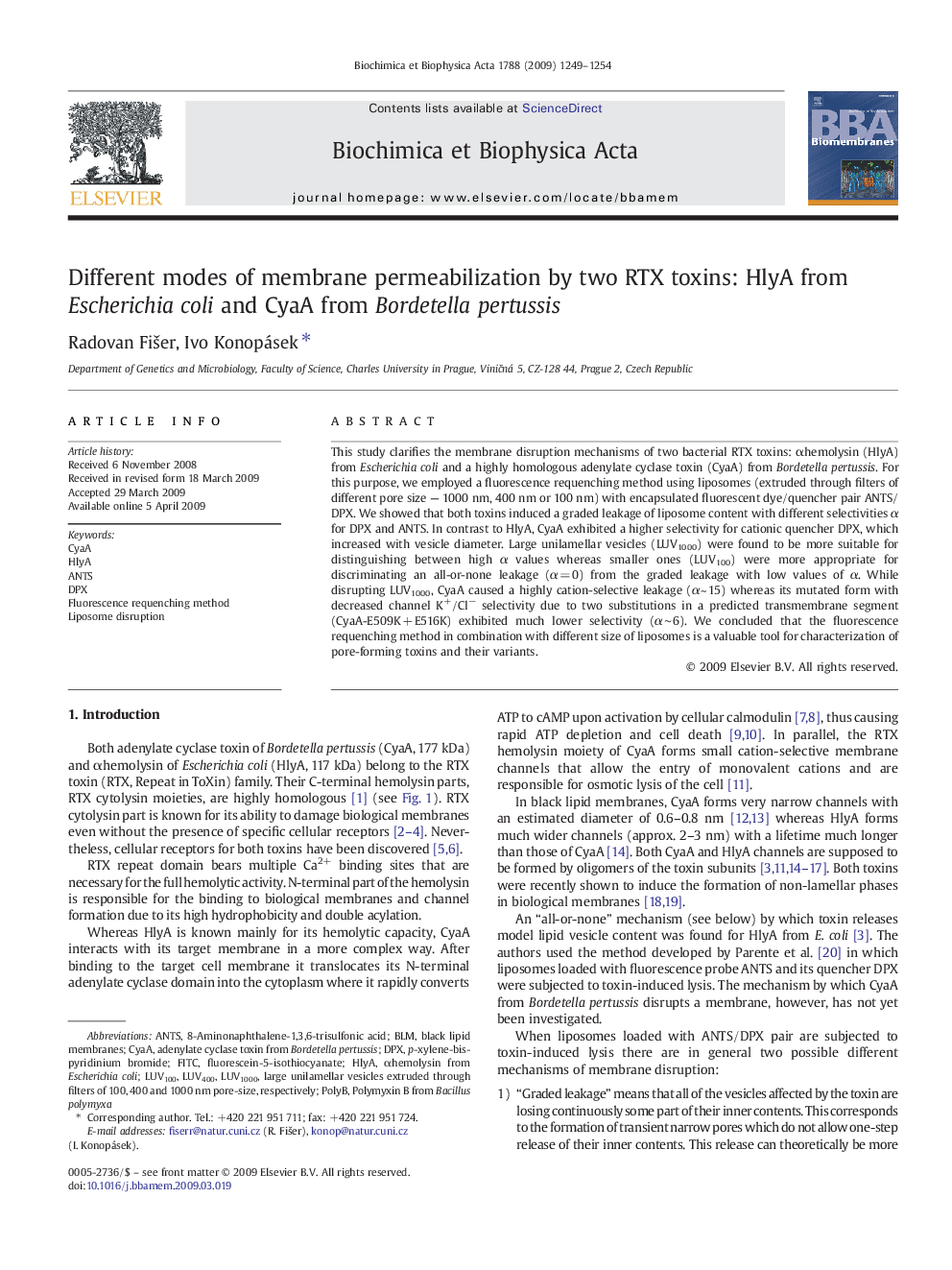| Article ID | Journal | Published Year | Pages | File Type |
|---|---|---|---|---|
| 1945141 | Biochimica et Biophysica Acta (BBA) - Biomembranes | 2009 | 6 Pages |
This study clarifies the membrane disruption mechanisms of two bacterial RTX toxins: αhemolysin (HlyA) from Escherichia coli and a highly homologous adenylate cyclase toxin (CyaA) from Bordetella pertussis. For this purpose, we employed a fluorescence requenching method using liposomes (extruded through filters of different pore size — 1000 nm, 400 nm or 100 nm) with encapsulated fluorescent dye/quencher pair ANTS/DPX. We showed that both toxins induced a graded leakage of liposome content with different selectivities α for DPX and ANTS. In contrast to HlyA, CyaA exhibited a higher selectivity for cationic quencher DPX, which increased with vesicle diameter. Large unilamellar vesicles (LUV1000) were found to be more suitable for distinguishing between high α values whereas smaller ones (LUV100) were more appropriate for discriminating an all-or-none leakage (α = 0) from the graded leakage with low values of α. While disrupting LUV1000, CyaA caused a highly cation-selective leakage (α ~ 15) whereas its mutated form with decreased channel K+/Cl− selectivity due to two substitutions in a predicted transmembrane segment (CyaA-E509K + E516K) exhibited much lower selectivity (α ∼ 6). We concluded that the fluorescence requenching method in combination with different size of liposomes is a valuable tool for characterization of pore-forming toxins and their variants.
